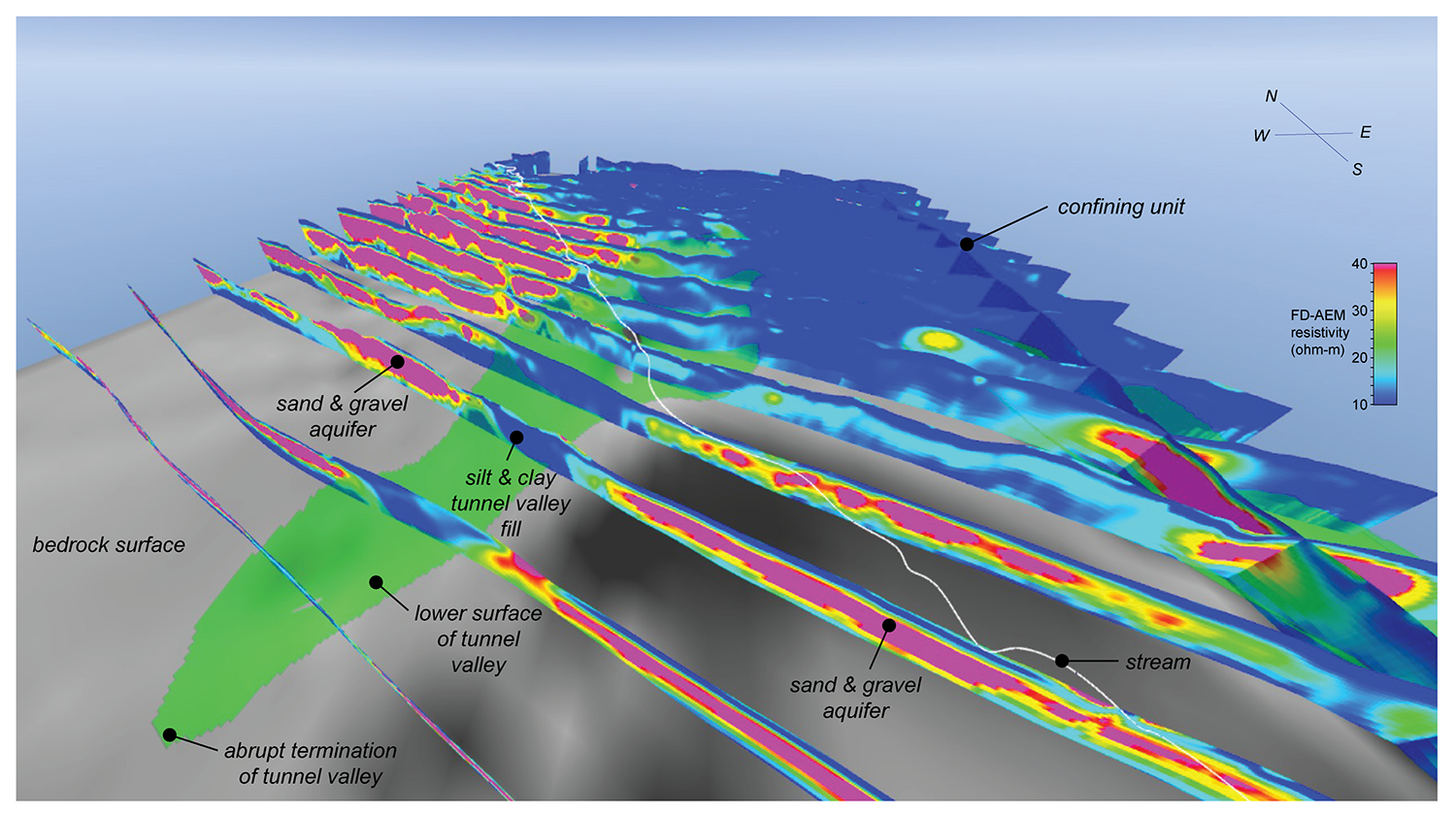
LINCOLN: — A grant awarded to a group of 10 Natural Resources Districts and Conservation and Survey Division at University of Nebraska-Lincoln will fund the creation of a cloud-based software program that will make available all airborne electromagnetic survey data for the state of Nebraska.
A surge in airborne electromagnetic surveying across the state — a cost-effective method of quickly mapping the Earth’s subsurface over large areas — has created a surge in data. The information, which can inform people’s understanding of how groundwater flows from one area to another, can help the state, counties and natural resource districts make more informed water management decisions.
The program, dubbed the Nebraska GeoCloud, will make this data available, but also will include maps, completed reports, boreholes and model layers. The layers provide information about the depth and thickness of geologic materials, such as aquifers composed of sand or sandstone, and can be used to locate wells, address water quality concerns, and refine groundwater management plans. Borehole data is invaluable to the application of AEM.
The project, funded through a Water Sustainability Grant and matching funds, is a collaboration among 10 of the state’s natural resource districts, the Conservation and Survey Division and the U.S. Geological Survey Nebraska Water Science Center. It is worth about $460,000, of which up to $264,000 will go to the CSD for software development and hydrogeologic studies.
Nebraska GeoCloud will be developed by I-GIS, a Danish firm that specializes in airborne electromagnetic data management as well as customized 3-D visualization software.
Jesse Korus, CSD groundwater hydrologist at the School of Natural Resources, is leading the project. Katie Cameron, survey hydrogeologist with the survey division and the Lower Platte South NRD, and Matt Joeckel, state geologist and associate director for the CSD, are assisting.
“The goals of this project fall in line with the mission statements of the CSD and USGS, which are tasked with investigating and reporting the geology of Nebraska and the quantity and quality of its water resources,” Korus said.
As a part of this grant, the USGS and survey division will conduct hydrogeologic studies so they can develop better methods of mapping aquifers and characterizing groundwater resources through the use of airborne electromagnetics. AEM works by flying a tool over a target area; as it sends an electromagnetic signal toward Earth, the tool records the electrical response of the subsurface. Clay, for example, is more electrically conductive than sand or gravel and can be easily distinguished from other materials on 2-D and 3-D images created in the software program. This method is able to record extremely detailed information as much as 457 meters (1500 feet) deep below the Earth’s surface.
This three-year project is scheduled for completion in 2020. It will provide natural resources districts, state agencies, consultants, and research geologists with access to hydrogeologic data that is necessary for the proper management and protection of Nebraska’s groundwater supplies.
“This is a singular achievement for our survey personnel,” Joeckel said, “and it will prove to be an accolade for the University of Nebraska-Lincoln.”
For more information on this project, contact Korus at jkorus3@unl.edu, Cameron at kcameron2@unl.edu or Chris Hobza, USGS hydrologist, at cmhobza@usgs.gov.
###
The Conservation and Survey Division, is the geologic and hydrologic survey component of the School of Natural Resources at the University of Nebraska-Lincoln. The division’s mission is to investigate and record information about Nebraska's geologic history, its rock and mineral resources, the quantity and quality of its water resources, land cover and other aspects of its geography, as well as the nature, distribution and uses of its soils. In addition to survey duties, CSD personnel engage in published scientific research and teaching.
Writer: Shawna Richter-Ryerson, Natural Resources
More details at: http://csd.unl.edu